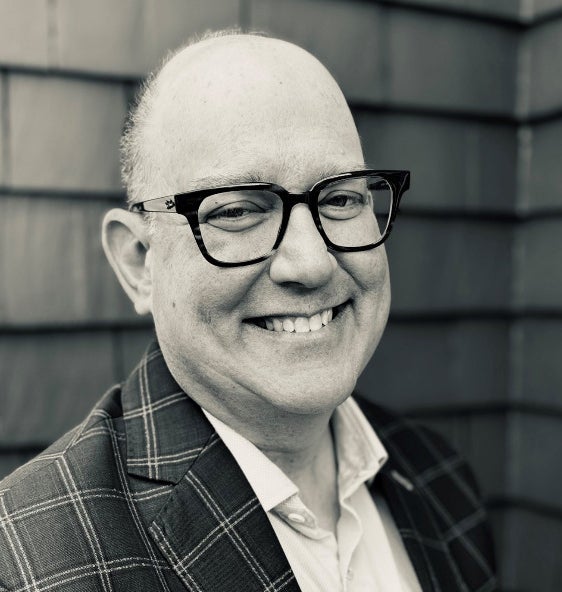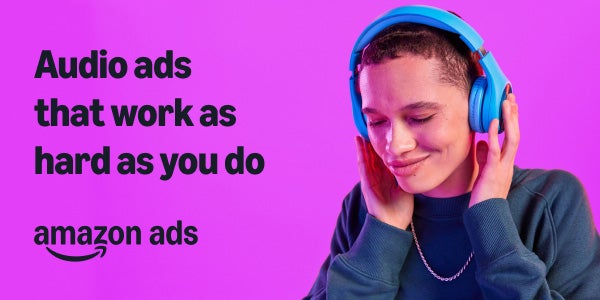Take a moment to think about how your day sounds. Maybe you start with the sound of your alarm, followed by a quick news briefing from your smart speaker while you scroll through emails. Your favorite podcast keeps you company during your commute. Your to-go playlist helps you get in the zone at the gym.
Sound is everywhere. It fills the in-between moments, fuels our routines and connects us emotionally in ways that no other medium can. Yet, for all that time and attention we give to audio, ad dollars haven’t kept pace. This is what I call the “sound gap,” the persistent disparity between the time consumers spend listening and the investment advertisers make in reaching them. For more than 30 years, I’ve dedicated my career to closing the sound gap. Now is the time.
The sound gap is real
Across streaming music, podcasts, audiobooks and live radio, listeners are spending more hours with audio than ever before. Americans are spending three hours and 50 minutes per day listening to audio, according to Edison Research’s Q2 2025 Share of Ear report. Of this, two hours and 26 minutes are ad-supported. That’s nearly 64% of all audio time, which presents a significant opportunity for brands and advertisers.
And yet, when you look at ad budgets, audio’s share is still stuck in the single digits. According to eMarketer, audio accounts for only 4.5% of total US media ad spend.
For years, audio has been hard to measure, harder to attribute to success (e.g., sales) and difficult to fit into the frameworks advertisers use to optimize their omnichannel campaigns.
That’s changing, but it needs to change faster.
Audio has been the underdog
For a long time, the tools for understanding audio performance lagged behind those of display, search or video.
Unlike visual formats, audio doesn’t have clicks or view-through rates. Audio’s influence is often heard, not seen. That has made it tricky for marketers who rely on omnichannel dashboards that measure attention in pixels, taps and add-to-carts.
AdExchanger Daily
Get our editors’ roundup delivered to your inbox every weekday.
Daily Roundup
The irony is that audio is one of the most personal, leaned-in and emotional environments brands can embrace. When a listener chooses a radio station or playlist to match their mood or a podcast they trust, they’re inviting sound into their most focused and intimate moments. That’s powerful, and it deserves better measurement to match its impact.
The industry is turning up the volume
Advances in first-party insights, privacy-safe attribution models and AI-driven creative are helping advertisers see the value of what they’ve long been hearing. Thanks to demand-side platforms, streaming audio platforms can now connect ad exposure to brand lift, shopping activity and even offline outcomes.
But the opportunity isn’t just about technology; it’s about mindset. Audio should be treated as a core pillar of the omnichannel mix, not an experimental add-on.
At Amazon Ads, we’ve partnered with leading audio services like Spotify, SiriusXM Media and iHeartMedia to help advertisers meaningfully reach audiences at scale and meaningfully measure the impact.
The audience has already leaned in. The moments of connection are already happening. The only thing missing is the advertising investment to match it.
Closing the sound gap
It’s time for the industry to ask: Are we truly meeting consumers where they are?
Right now, hundreds of millions of consumers are listening, often for hours a day. Brands have a rare chance to earn attention in a space that feels personal, not intrusive.
The challenge ahead isn’t creating more noise; it’s bringing more intention to how we use sound in the advertising mix. This means:
- Investing to reach audiences where they are spending a significant amount of time.
- Championing better measurement standards that capture audio’s full-funnel impact.
- Collaborating across platforms and agencies to make audio more accessible, accountable and creative.
When we close the sound gap, we won’t just elevate audio advertising; we’ll elevate omnichannel advertising, turning moments of listening into moments of measurable, genuine connection.
Because in a world full of distractions, sometimes the most powerful message is the one that you’re already hearing.















